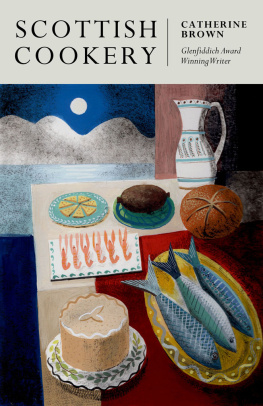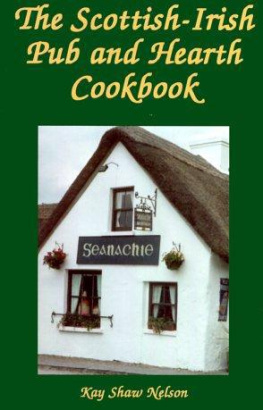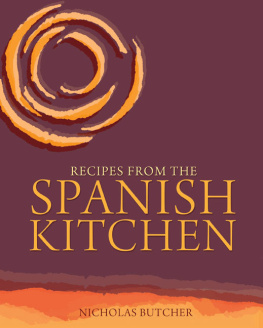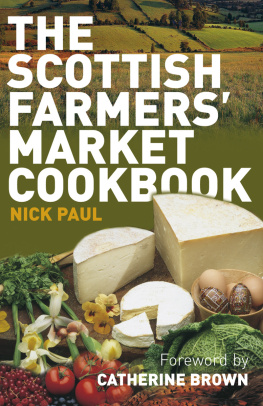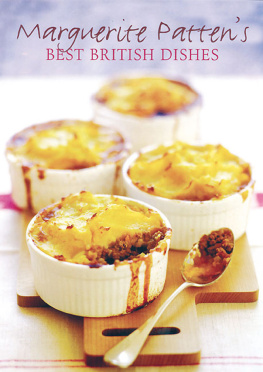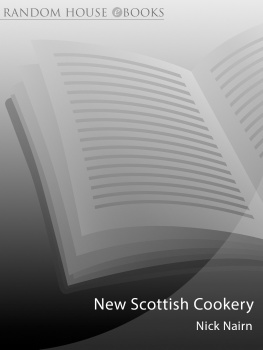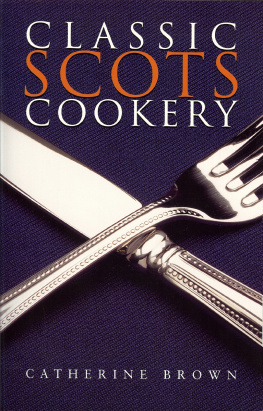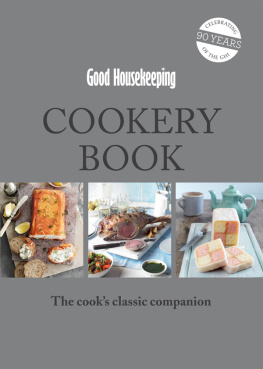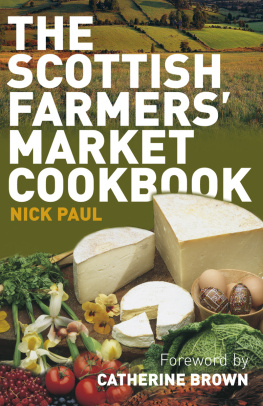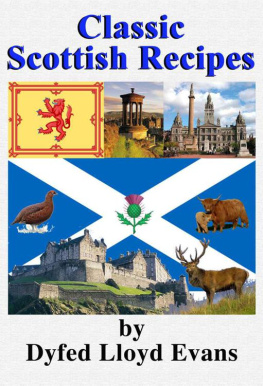S COTTISH C OOKERY
Catherine Brown became widely known during the 1980s and 90s for her investigative food columns in The Herald (Scotland) and as a presenter of STV and Grampian TVs Scotlands Larder. She was the Guild of Food Writers Food Journalist of the Year in 2001 and is the author of several books on Scottish food, including her acclaimed Scottish Seafood. She recently edited and introduced a major new edition of F. Marian McNeills The Scots Kitchen. Her time is divided between a small village in Perthshire and an even smaller village on the shores of Loch Torridon. She can be visited at www.foodinscotland.co.uk.

This ebook edition published in 2013 by
Birlinn Limited
West Newington House
Newington Road
Edinburgh
EH9 1QS
www.birlinn.co.uk
First edition published in 1985 by Richard Drew Publishing Limited
Second and third editions published in 1999 and 2006 by
Mercat Press Limited
Fourth edition published in 2013 by Birlinn Ltd
Catherine Brown, 2013
Illustrations by Jane Glue
The right of Catherine Brown to be identified as the author of this work has been asserted by her in accordance with the Copyright, Design and Patent Act 1988.
All rights reserved. No part of this publication may be reproduced, stored or transmitted in any form without the express written permission of the publisher.
ebook ISBN: 978-0-85790-635-9
ISBN: 978-1-78027-108-8
British Library Cataloguing-in-Publication Data
A catalogue record for this book is available on request from the
British Library.
I NTRODUCTION
The Past
While Maggie puts her girdle-baked barley bannocks and oatcakes on the table with some soft cheese, Alistair goes to lift the lid of the pot on the peat fire, taking out a piece of meat and bringing it to the table. Its been in the salt (a barrel of brine in the barn), he tells us. It comes, we discover, from one of his Blackies (Blackface sheep) which has roamed the rough hillsides for the best part of four years. We all get a piece of the mutton to eat with an oatcake. We marvel at its flavour. Afterwards, he chops up some kale and adds it to the pot and serves us platefuls of his broth, flavoured with barley, carrots, turnips and potatoes. Simple, sustaining and unforgettable.
Id like to take you into the remote corner of the North West Highlands where these crofters lived. The date is 1972 and the place is a croft house on the Applecross peninsula in Wester Ross. Born at the beginning of the century, brother and sister, Maggie and Alistair, are in their seventies now and have lived here all their lives. A road has just been built round this coastline where the transport until now has been by boat or foot. Its a wild night outside, but there is a warm glow from a peat fire and the pot on it, slowly simmering, is filling the croft house with its fabulous aromas.
This ingenious system of self-sufficiency, making the best use of an inhospitable landscape and harsh climate, is the basis of the ancient crofting system of agriculture where scarce fertile land is divided among the population and extensive grazing land is common for all to use. These Scots, in the past, could be described as poor Northern Europeans. Without material assets, they were naturally thrifty in their ways. Their frugal, largely meatless, diet was based on broths made with vegetables, dried beans and peas, barley and lentils; brose and porridge made of oats and barley; and everything supplemented with milk, cheese and butter. Meat was a relatively rare occurrence, since animals especially cattle were valuable capital assets for export, not eating. Fish, on the other hand, was everyday food. Wild game, sorrel, watercress, silverweed, seaweed, garlic, nettles, hazel and beech nuts, brambles, blaeberries, cloudberries and raspberries were seasonal treats.
Before the Jacobite rebellions of the 1700s, and the exodus to the New World in the 1800s, these Highland clanspeople were expert in preservation techniques: salting, drying and smoking. Their method of cooking was ruled by their source of fuel: mostly dried-out blocks of peat turf which burned with a slow, steady glow, creating a gentle source of heat suitable for slow-simmered broths and stews. Their method of baking on an iron girdle was also ruled by the gentle peat fire. Flat unleavened breads, known as bannocks, were cut into farls (quarters) and baked on a cast-iron girdle.
The gradual deterioration of the Highland economy, after the introduction of sheep farms and the growth of shooting estates in the 1800s, led to a much less varied diet as well as a great deal of poverty. When the people were moved from the fertile glens, and rehoused at the less fertile coast, their diet suffered. The potato became a staple. The large herds of hardy native cattle were replaced by the landlords sheep. Game, now sport for the landlord, was off the menu. Fish was their saving, a rich food supply which they exploited to the full.
South of what is called the Highland line from Stonehaven on the east coast to Dumbarton on the west, in the area described as the Lowlands, things were different. Here, there were larger areas of rich agricultural land, colonised by Benedictine and Cistercian monks in the Middle Ages. They had come with horticultural expertise and new varieties of fruits and vegetables. In other lowland areas there were also improving landlords who cleared stones, built dykes and enclosed fields. Using the Highlanders cattle as breeding stock, some developed new breeds of cattle which have become famous worldwide for their fine-flavoured beef.
This spirit of agricultural improvement brought with it an improvement in the diet. There were better supplies of fruits and vegetables. For the more affluent, meat became a more regular item of diet, though fish remained the predominant source of protein for coastal communities and their hinterland. High food value oatmeal the great sustainer had overtaken barley as the staple grain in everyday brose and porridge, taken with milk, and in oatcakes eaten with cheese. The vigour and endurance of the people recorded in Statistical Accounts, and also noted by visiting observers, was generally attributed to the high quality of their frugal, but nutritious, diet.
The social upheaval of the Industrial Revolution, in the second half of the 1800s, altered this high quality diet. In the Lowlands it created urban slums, poverty and deterioration in diet. In the worst conditions, a kettle of boiling water for sugary tea to drink with slices of white bread and jam replaced the previous nutritious diet. In less dire conditions, the old thrifty rural diet survived in cheaply-made pots of broth using native vegetables, barley, peas and lentils along with inexpensive cuts of butcher meat. The cheap odds and ends of the carcass, tripe, liver, kidney, heart and head were highly valued. Black puddings, mealie puddings, sausages, mince and of course haggis were all useful adjuncts to the ubiquitous pot of potatoes.
Though the Lowland urban diet at its worst had nothing left of this previous culinary system, the rural diet survived better. It retained a more intimate link with the soil and its produce, continuing the old thrifty-cooking methods still to be found in the 1970s in Alistair and Maggies croft house. Like others of their generation they had lived through two world wars, and during the second one had joined with the rest of the nation in the fight to keep the nation at home fed. They were well-placed to survive in the worst-case scenario the urban population less so. But wartime rationing to save the country from starvation jolted them into a new mindset. Suburban front lawns were dug up to grow potatoes and thrifty nose-to-tail cooking became a necessity for both urban and rural. It was a relatively brief period (1940-1954) but it improved the urban diet. Everyone re-connected, more meaningfully, with their food supply; remembering how to cook good-tasting meals which made the best use of the native-grown and locally-sourced ingredients of the frugal, but nutritious, old Scots diet.

